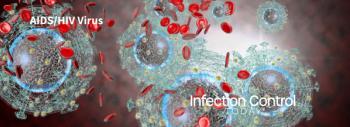
West Nile Researchers Continue Battle
ALBANY, N.Y.-Cold weather has grounded mosquitoes carrying the West Nile virus. No new human cases are being reported. The deadly virus appears to be resting for the winter.
Not so for West Nile researchers.
``We don't get a rest here,'' said entomologist Theodore Andreadis of Connecticut's Agricultural Experiment Station. ``It's continuous.''
Already this fall, blood samples were collected from hundreds of volunteers in New York and Connecticut who live in West Nile hot spots. Crews armed with portable vacuums will search subterranean rooms and sewers for mosquitoes to collect and test. Local West Nile emergency plans are being reviewed to see how effective they were.
The aim is to answer nagging questions public health officials still have about West Nile virus: How prevalent were human infections last year? How does the virus survive the winter? What can be done differently to fight it next year?
Health officials hope to get answers and avoid a repeat of this year, when they were caught off guard by infected animals turning up in 12 eastern states and Washington, D.C. West Nile had been mostly confined to the New York City area in 1999 - the year it first appeared in the Western Hemisphere.
``None of us would have predicted that the virus would do what it did,'' said Dr. Stephen Ostroff, federal coordinator for the West Nile virus at the Centers for Disease Control and Prevention.
``All through this year, we've essentially been rewriting the book, as it were, on what's supposed to happen with this virus,'' he said.
Researchers are still trying to better understand how the mosquito-borne virus survives through the winter. Most mosquitoes die after the first hard frost, but some survive and find warm hiding spots in places like basements and boiler rooms.
Crews that collected mosquitoes in New York City last winter found evidence of the virus in low levels. Crews armed with flashlights and vacuums will be at it again this winter, searching the likes of sewers, abandoned airport hangers and utility rooms in parts of New York and Connecticut.
Researchers want to get a better idea of which species of mosquitoes are harboring the virus, as well as how many. There is also speculation the virus can survive the winter in infected birds, although there is no evidence that birds spread West Nile to humans.
Seventeen human cases of West Nile were reported this year, all in New York City and New Jersey. The virus can cause encephalitis, a brain inflammation. But it's unknown how many healthier people shrugged off a milder case of West Nile, which can feel like the flu, without seeking medical attention. Most confirmed cases tend to be among patients with weaker immune systems, such as the very old or very young.
``We know there are many more people who may have been infected and didn't exhibit any clinical symptoms,'' said New York City Health Department spokeswoman Sandra Mullin.
Testing has begun to determine how widespread the disease was among humans in areas where West Nile was prevalent among animals. More than 2,100 volunteers gave blood in door-to-door canvassing in Staten Island, Long Island and the suburbs of southwestern Connecticut.
Test results should be available in a few months. Ostroff said a key question is why were there no confirmed West Nile human cases in those suburban areas, despite high numbers of infected animals locally. Researchers will also check if certain age groups were infected at a higher rate, said New York state Health Department spokeswoman Kristine Smith.
Answers to the questions could have a bearing on how communities combat West Nile. Dr. Dale Morse of the state Health Department's Center for Community Health said New York will try to determine how effective insecticide spraying was as part of a re-examination of the state's West Nile response plan. Morse said there could be a re-emphasis on larvicide and personal protection, such as insect repellents.
Local officials from several states will meet with the CDC early next year to discuss strategies for next spring, when mosquitoes become active again.
Ostroff, for one, hopes the meeting comes amid a nice, cold winter - all the better to keep mosquito populations down. ``The longer and colder the winter, the happier I am as far as West Nile is concerned,'' he said.
Newsletter
Stay prepared and protected with Infection Control Today's newsletter, delivering essential updates, best practices, and expert insights for infection preventionists.






